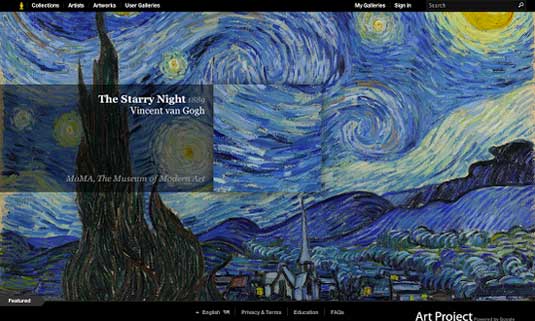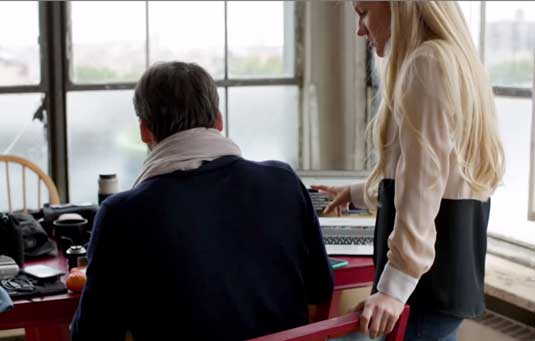UX pros: we need to talk about marketing
Sam Smith explores how UX specialists can play a more prominent role in the planning of digital marketing projects.

The role of user experience (UX) is becoming increasingly indispensable in our digitised world. Despite this, digital marketers don't always have a clear understanding of what it is and the impact that good UX design can have on a digital campaign.
Like marketers, we are constantly looking at what we are designing with both the business and the user at the forefront of our minds. We both want to produce sites and products that work seamlessly and create the kind of good experiences that help brands stand apart from their competitors.
Given these similarities, it seems odd that there hasn't been closer collaboration or cross-pollination in the past.
The importance of UX
At Potato, we design and build complex web apps for a range of clients, including Google and a number of agencies and start-ups, with diverse user-bases and complex requirements to consider. UX is always at the heart of those projects' successes.
We're interested in exploring how the dialogue between marketers and UX designers can be improved to enhance the quality of the final product and hopefully avoid missed opportunities to create the best user experiences.
With tech evolving and consumer expectations ever-changing, brands that don't keep up will quickly lose their audience. Providing a good user experience is one of the most valuable tools a brand has to keep users engaged, encouraging them to spend more time with the brand itself.

As consumers are exposed to an increasing amount of digital interactions on a daily basis, brands that offer a powerful and enjoyable experience across these platforms or devices will likely prove to be the most attractive to consumers.
Daily design news, reviews, how-tos and more, as picked by the editors.
We need to be alert to the many areas of business where UX design can have a positive impact. It's not just consumers who need good digital experiences.
Good design (and in this I include UX as well as other design disciplines) can have a huge impact on the day-in, day-out lives of staff, investors, regulators and any of the increasing variety of stakeholders who may be exposed to a digital window into an organisation.
Heading off frustration
To take just one example, employees who are frustrated with the internal digital tools that businesses ask them to use often pass on this frustration in the way they interact with other staff or even customers.
It's not hard to imagine how this could happen in high-pressure environments such as a call centre but it applies equally to a busy airport check-in desk or the reception at an accident & emergency department.
Looking further ahead, the Internet of Things will bring its own UX challenges and opportunities. Creating good user experiences will not only require designers with understanding of digital design, but also input from other design disciplines like product design and ergonomics, as well as those with a deep knowledge of customer needs and abilities who recognise the importance of undertaking contextual research.
Joined-up approach
In this increasingly connected world experiences will be spread over several touchpoints, devices, contexts and interactions. Not only that, but the way we engage with digital experiences potentially be over a longer timeframe and more than one interaction.
Designing for this this requires a more joined-up approach to UX, where brands have the potential to create more coherent digital ecosystems, rather than an array of disjointed experiences across their platforms.
In this context, UX will need to be front and centre of the planning process, working alongside marketers in a reflexive and collaborative way. Wherever possible, the UX team should be involved from the conceptual stage, when key strategic and operational decisions are made.
Practical and creative
A combination of the practical and creative sides of UX will both prove useful for marketing activity now and in the future.
This is even more significant when you consider that good UX is not only attracting larger audiences to interact with an app or site, but also potentially allowing better tracking metrics and future engagement opportunities for the brand itself.

Some marketing agencies already do this, but often not effectively. Many strategists have backgrounds in UX and can show marketers what users are expecting or doing.
Difficulties crop up when these strategists/agencies don't understand the practical and technical sides of things or push concepts that aren't feasible (within the available budget or timescale).
Company-wide approach
User experience at Potato extends beyond the UX team into the whole company's approach. As a company with our heart and origins in development and engineering, most people in our business are exposed to the technical side of things in the course of their day to day work.
In the same way we are aiming to ensure that UX is as much a part of the developer's responsibility as it is for the designer. Early and constant collaboration between the two sides of the business is the key to bridging the gap between aspiration and feasibility, which can save a lot of time and pain down the line.
As increasingly complex digital platforms ask ever more of marketers, we're confident that UX design is best placed to deliver the strong connections that brands need, irrespective of where their audiences are. Through collaboration and proven effectiveness, the voice of UX is one that needs to be heard.
Words: Sam Smith
Sam Smith is head of UX at Potato.
Liked this? Read these!

The Creative Bloq team is made up of a group of art and design enthusiasts, and has changed and evolved since Creative Bloq began back in 2012. The current website team consists of eight full-time members of staff: Editor Georgia Coggan, Deputy Editor Rosie Hilder, Ecommerce Editor Beren Neale, Senior News Editor Daniel Piper, Editor, Digital Art and 3D Ian Dean, Tech Reviews Editor Erlingur Einarsson, Ecommerce Writer Beth Nicholls and Staff Writer Natalie Fear, as well as a roster of freelancers from around the world. The ImagineFX magazine team also pitch in, ensuring that content from leading digital art publication ImagineFX is represented on Creative Bloq.
